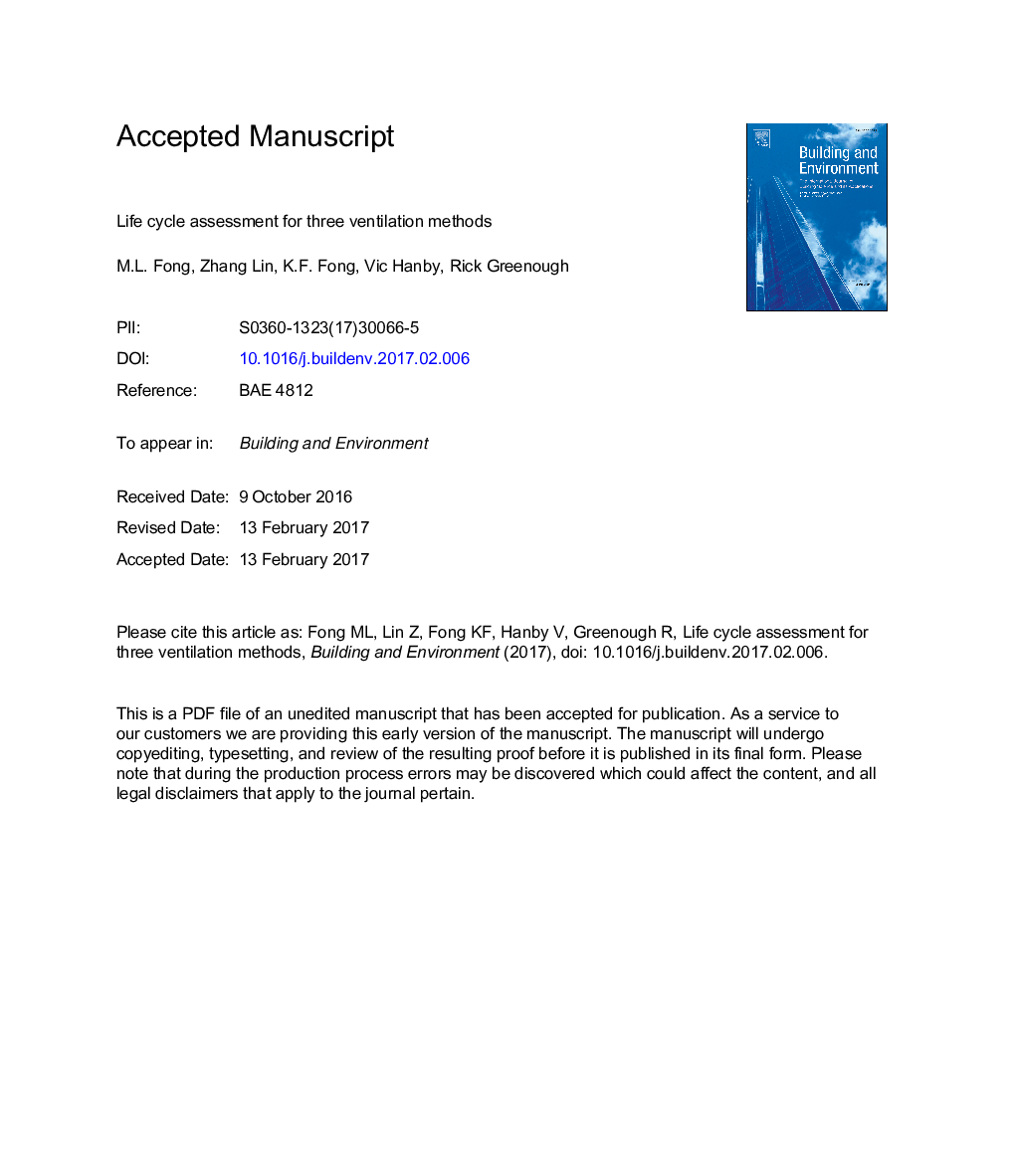| Article ID | Journal | Published Year | Pages | File Type |
|---|---|---|---|---|
| 4917372 | Building and Environment | 2017 | 46 Pages |
Abstract
A sustainable ventilation method is one of the possible solutions to mitigate climate change and carbon emission. This method shall involve an analysis of the environmental impact, energy performance, and economical cost-effectiveness. There are still few studies concerning the life cycle assessment (LCA) of various alternative ventilation systems incorporating the combined effect of life cycle cost (LCC) and carbon emission in the supply-and-installation phase, as well as energy performances in the operation phase. The supply-and-installation phase of the system materials and components has a significant contribution to the total energy consumption and environmental loads of buildings. This paper covers a systematic approach to estimate their environmental impact, which has been counted in terms of energy demand and CO2 emission in the two phases. This approach has been applied to an actual typical classroom served by mixing ventilation (MV), displacement ventilation (DV) and stratum ventilation (SV). The results show that SV has the least environmental impact and life cycle cost (LCC). Results of this analysis demonstrated that by adopting DV and SV, it is possible to reduce the CO2 emission up to 23.25% and 31.71% respectively; and to reduce the LCC up to 15.52% and 23.89% respectively, in comparison with an MV system for 20 service years. This approach may be generally applied to a sustainability analysis of ventilation methods in various scales of air-conditioned spaces.
Related Topics
Physical Sciences and Engineering
Energy
Renewable Energy, Sustainability and the Environment
Authors
M.L. Fong, Zhang Lin, K.F. Fong, Vic Hanby, Rick Greenough,
